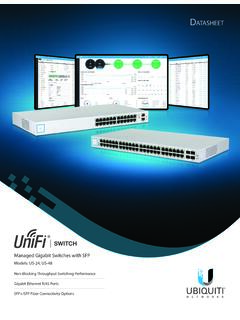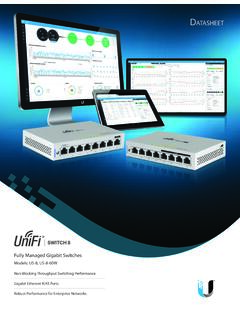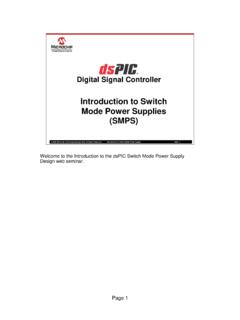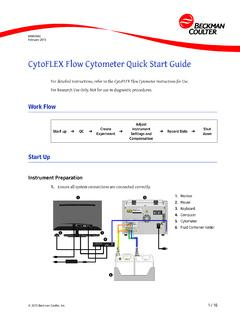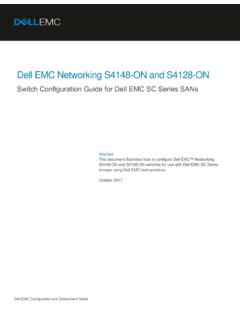Transcription of Lockout and Tagout Policy for [enter COMPANY NAME]
1 Lockout and Tagout Policy for [enter COMPANY name ] Purpose: This procedure establishes the minimum requirements for the Lockout of energy isolating devices whenever maintenance or servicing is done on machines or equipment. It shall be used to ensure that the machine or equipment is stopped, isolated from all potentially hazardous energy sources and locked out before employees perform any servicing or maintenance where the unexpected energizing or start-up of the machine or equipment or release of stored energy could cause injury. Who: All employees are required to comply with the restrictions and limitations imposed upon them during the use of Lockout . The authorized employees are required to perform the Lockout in accordance with this procedure. All employees, upon observing a machine or piece of equipment which is locked out to perform servicing or maintenance shall not attempt to start, energize, or use that machine or equipment.
2 DEFINITIONS Authorized employee: An employee who locks or tags machines or equipment in order to perform servicing or maintenance. Affected employee: An employee who is required to use machines or equipment on which servicing is performed under the Lockout and Tagout standard or who performs other job responsibilities in an area where such servicing is performed. Policy It is the Policy of [ COMPANY name ] that any individual engaged in maintaining, repairing, cleaning, servicing, or adjusting of machinery, or equipment on [ COMPANY name ] property will abide by the procedures outlined in this document and specific procedures outlined in our injury prevention program. These procedures are designed to meet or exceed applicable OSHA standards for safe work practices.
3 As part of this Policy a Job Hazard Analysis (JHA) will be conducted for all major maintenance and repair operations within the shop. JHA will be used to develop Standard Operating Procedures (SOPS) in order to help assure safe work practices. Lockout is a first means of protection; warning tags only supplement the use of locks. Tags alone may be used only when the application of a lock is not feasible and with approval of the appropriate supervisor. PURPOSE Lockout and Tagout ensures that all employees are protected from the unexpected activation of mechanical and/or electrical equipment during maintenance, repairing, cleaning, servicing, or adjusting of machinery, or equipment. It also assures that all employees are protected against the release of residual (stored) energy in machines.
4 DEFINITIONS Lockout The practice of using keyed or combination security devices ("locks") to prevent the unwanted activation of mechanical or electrical equipment. Tagout The practice of using tags in conjunction with locks to increase the visibility and awareness that equipment is not to be energized or activated until such devices are removed. Tagout devices will be of the non-reusable type, attachable by hand, self-locking, and non-releasable with a minimum unlocking strength of no less than 50 pounds. ACTIVATION/ENERGIZATION Energy that sets machinery into motion by starting, switching, pushing, moving, or otherwise engaging power sources for such equipment. Completing a circuit that provides a flow of electricity that is the main or secondary power source for machinery/equipment.
5 ENERGY CONTROL PROCEDURES Use of lock out/tag out equipment to ensure safe work practices. HAZARDOUS MOTION AND ENERGY Hazardous motion may result even after power sources are disconnected. Examples are coiled springs, raised hydraulic equipment, and any source energy ( , electricity, pressurized steam) that may cause injury. Hazards may be caused by equipment under mechanical stress or gravity that may abruptly release and cause injury. RESPONSIBILITIES SAFETY LEADERSHIP TEAM Conduct a Job Safety Analysis for repair and maintenance processes. Provide annual training to employees affected by Lockout and Tagout procedures. Inspect energy control procedures and practices at least annually to ensure that general and specific Lockout and Tagout procedures are being followed.
6 Inspections should be carried out by persons OTHER than those employees directly utilizing energy control procedures. Inspections will include a review between the inspector and each authorized employee, of that employee's responsibilities under the energy control procedure being inspected. Certify that periodic inspections have been performed (see RECORDKEEPING and Appendix A, LOCK OUT/TAG OUT INSPECTION FORM) Maintain a file of equipment, machinery, and operations that require the use of lock out/tag out procedures. The file will include the location, description, power source, and primary hazards of equipment/ machinery, a list of the primary operators/maintenance personnel, and a list of lock out/tag out equipment that is used and maintained on site.
7 SUPERVISORS Ensure that each employee and contractor engaging in work requiring locking/tagging out of energy sources understands and adheres to adopted procedures. Assure that employees have received training in energy control procedures prior to operating the machinery or equipment. Provide and maintain the necessary equipment and resources, including injury prevention signs, tags, padlocks, and seals. EMPLOYEES Adhere to specific procedures as outlined in this document for all tasks that require the use of Lockout and Tagout procedures. SPECIFIC PROCEDURES PREPARATION FOR Lockout AND Tagout Make a survey to locate and identify all isolating devices to be certain which switch (es), valve(s), or other energy isolating devices apply to the equipment to be locked or tagged out.
8 More than one energy source (electrical, mechanical, hydraulic, thermal, and chemical) may be present with a single piece of equipment. SEQUENCE OF Lockout OR Tagout SYSTEM PROCEDURE Notify affected employees that a lock out or tag out system is going to be utilized and the reason. The authorized employee shall know the type and magnitude of energy that the machine or equipment utilizes and shall understand the hazards thereof. If the machine or equipment is operating, shut it down by the normal stopping procedure (depress stop button, open toggle switch , etc.). Operate the switch , valve, or other energy isolating device(s) so that the equipment is isolated from it energy source(s). Stored energy (such as that in springs, elevated machine members, rotating flywheels, hydraulic systems, and air, gas, steam, or water pressure, etc.)
9 Must be dissipated or restrained by methods such as repositioning, blocking, bleeding down, etc. Lock out/Tag out the energy isolating devices with assigned individual lock(s) or tag(s). After ensuring that no personnel are exposed, and as a check on having disconnected the energy sources, operate the push button or other normal operating controls to make certain the equipment will not operate. CAUTION: Return operating control(s) to neutral or off position after the test. The equipment is now locked out or tagged out. RESTORING MACHINES OR EQUIPMENT TO NORMAL OPERATIONS After the servicing and/or maintenance is complete and equipment is ready for normal production operations, check the area around the machines or equipment to ensure that no one is exposed.
10 After all tools have been removed from the machine or equipment, guards have been reinstalled and employees are in the clear, remove all Lockout or Tagout devices. Operate the energy isolating devices to restore energy to the machine or equipment. PROCEDURE INVOLVING MORE THAN ONE PERSON In the preceding steps, if more than one individual is required to Lockout or Tagout equipment, each shall place his/her own personal Lockout and Tagout device on the energy isolating device(s). When an energy isolating device cannot accept multiple locks or tags, a multiple Lockout or Tagout device (hasp) may be used. If Lockout is used, a single lock may be used to Lockout the machine or equipment and the key placed in a Lockout box or cabinet, which allows the use of multiple locks.










